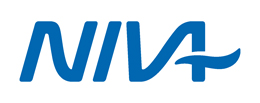NIVA
Type of resources
Topics
INSPIRE themes
Keywords
Contact for the resource
Provided by
Representation types
-

The NorFerry infrastructure started back in 2001 and covers a network of 5 Ferrybox-systems in the Baltic, North Sea, Atlantic Sea and Arctic areas. Two of them are offered to TNA. FA is installed on a ferry. The system has the core sensor with thermosalinograph, inlet temperature sensor, oxygen, Chl-a fluorescence, turbidity and system for water sampling. FA has also the additional fluorescence sensor of PAH, Pycocyanin and cDOM and passive sampling unit for contaminants. FA has spectrophotometric pH and a membrane based solid state detector pCO2 system, and radiometers for marine reflectance of the sea surface. Data are transferred daily via internet communication to a NIVA database as part of the CMEMS. The infrastructure is used for physical, pelagic biodiversity, chemical (contaminants) and biogeochemical (marine acidification) studies.
-

The Research Station at Solbergstrand performs large-scale experiments in marine ecology, sediment research, biogeochemistry, aquaculture and test technology for treating ballast water. The station has fiberglass and concrete seawater pools with volumes ranging from 20 to 550 m³. A number of smaller testing facilities on land and the seabed outside the station have been built to manipulate and control marine ecosystems. The station has 10 laboratories for experimentation and analysis activities, among them an authorized infection lab for fish and a special lab for working with radioactive tracers. Facilities at Solbergstrand covers e.g. hard-bottom and soft-bottom mesocosoms, brackish water systems, seaweed and kelp communities, pelagic communities from the upper water depths and continuous water supply from surface and 60 meter with measurements on temperature and salinity.For surface water additional sensor for Chl-a fluorescence are installed and for 60 m pH and pCO2. Other sensor combinations are available for experiments on request.
-

POSEIDON is an operational marine monitoring, forecasting and information system for the GreekSeas. The observing component is a distributed infrastructure made by three coastal buoys (Saronikos buoy-SB, Heraklion Coastal Buoy-HCB and Athos buoy-AB) and one Ferrybox (PFB). A calibration laboratory) is supporting the observing activities. The Ferrybox is installed on board H/S/F “Knossos Palace” and is equipped with sensors measuring T, C/S, DO, pH, fluorescence and turbidity. It is the only Ferry Box in the Mediterranean operating daily along the route Heraklion – Piraeus.
-

The oceanographic data from the Oslofjord at 1 m and 60 m are in the range of a salinity of ~10-34 and a temperature range of -1 to 20 °C. Other sensor data that can be available are Chl-a fluorescence, turbidity, pH and pCO2. The station will give access to the above data for doing research on biogeochemistry and climate. NIVA staff will support via data QC and setup of remote data access.
-

NorFerry is composed of three FerryBoxes that are operating in the North Sea, coastal Norway, and the Barents Sea opening. The Ferrybox installation provide the core sensor data from about 4 meters depth of temperature, salinity, Chl-a fluorescence, oxygen and turbidity. Some ships will also provide data on parameters, ocean colour and true wind. Special sampling can be ordered.
 Metadata catalogue
Metadata catalogue